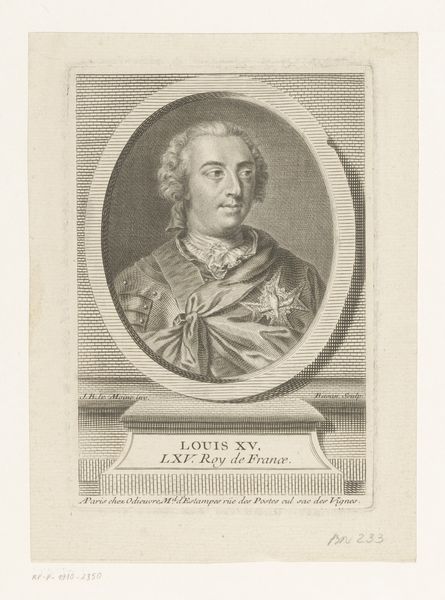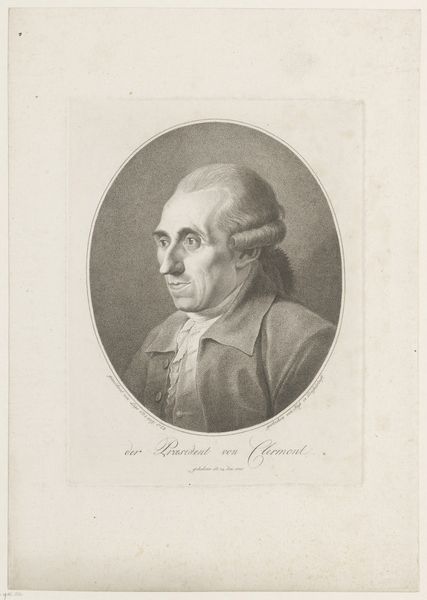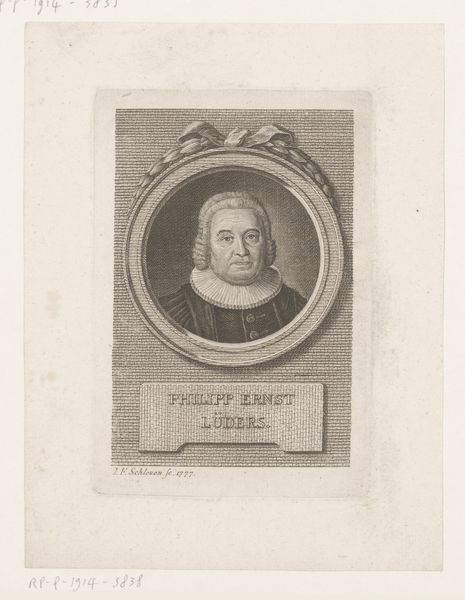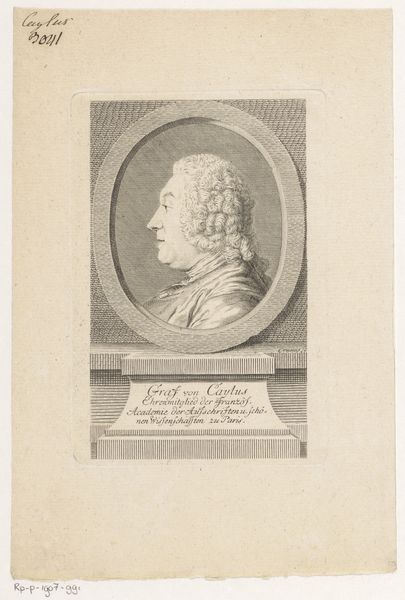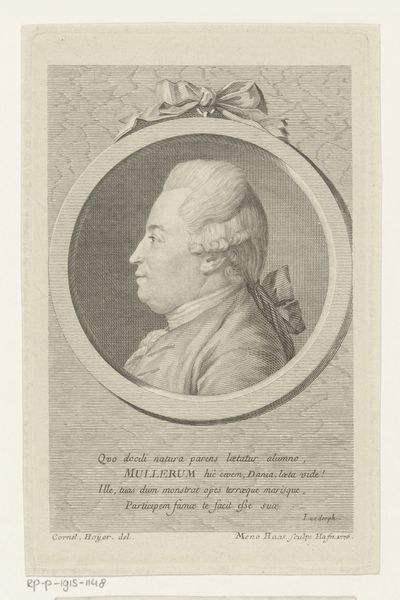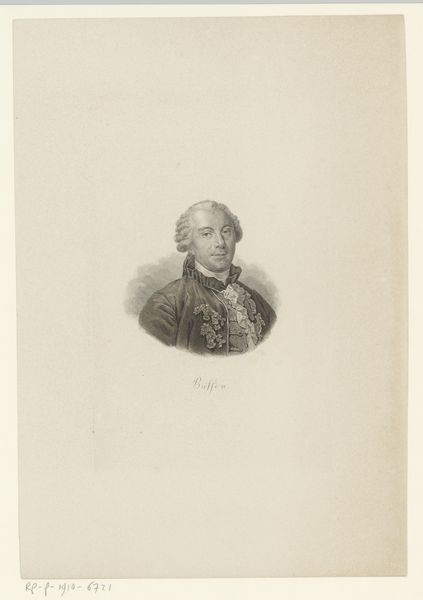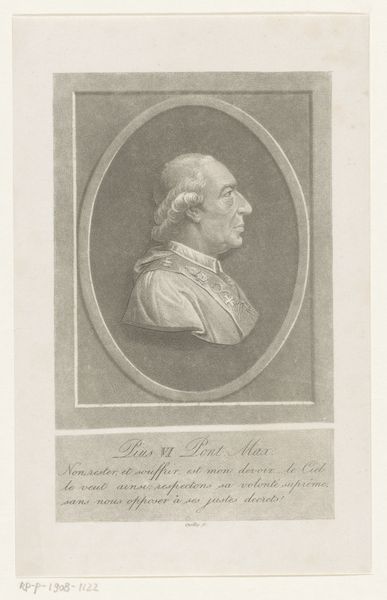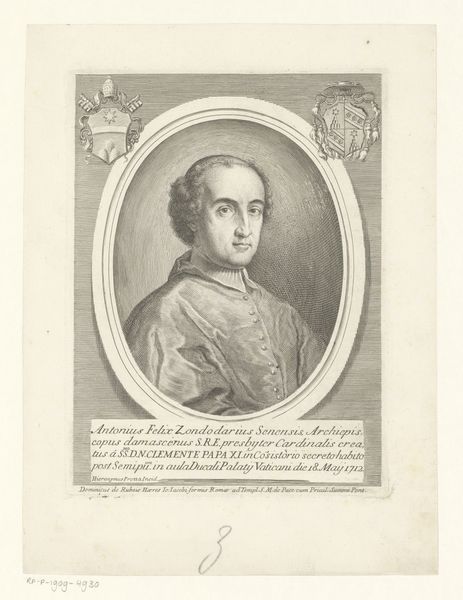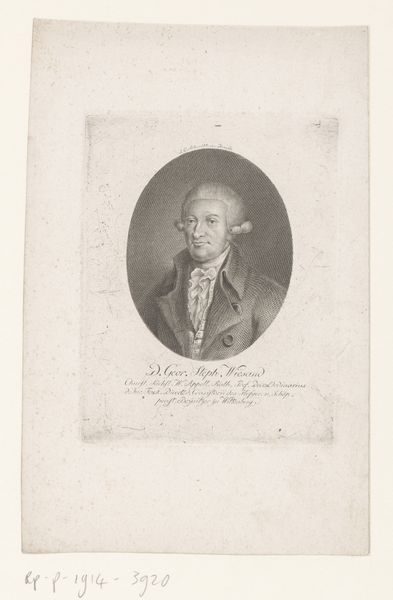
Portret van Lodewijk XVI, koning van Frankrijk 1776 - 1824
0:00
0:00
johannchristianernstmuller
Rijksmuseum
pencil, engraving
#
portrait
#
pencil drawn
#
neoclacissism
#
pencil sketch
#
old engraving style
#
pencil drawing
#
pencil
#
pencil work
#
history-painting
#
engraving
Dimensions: height 133 mm, width 86 mm
Copyright: Rijks Museum: Open Domain
This engraving of Louis XVI, King of France, was created by Johann Christian Ernst Müller in the late 18th or early 19th century, a period of immense social upheaval. Made using engraving, a technique allowing for the easy reproduction of images, this print gives us insight into the visual culture surrounding the French monarchy on the eve of revolution. The portrait's profile view, the King's powdered wig, and the royal insignia are all visual cues intended to convey authority. It’s difficult to say whether it was made before or after the French revolution, but the image is a potent reminder of the politics of imagery. The social conditions in France at the time were tense, marked by economic hardship, social inequality, and growing resentment towards the monarchy. We might look at the printing house and other institutions to find out who paid for it and what its purpose was. Was it part of a propaganda campaign? The meaning of this print, like any artwork, is contingent on its social and institutional context, something historians can shed light on.
Comments
No comments
Be the first to comment and join the conversation on the ultimate creative platform.



